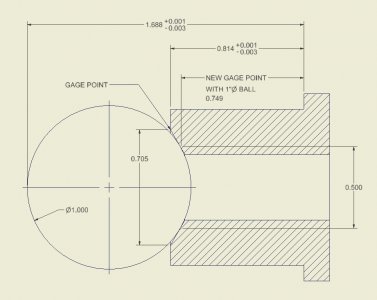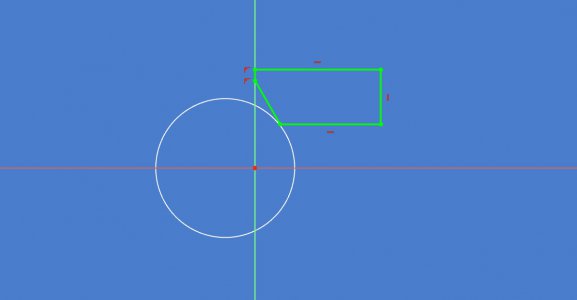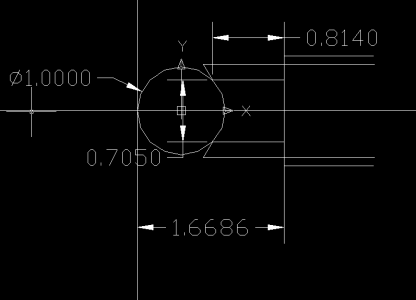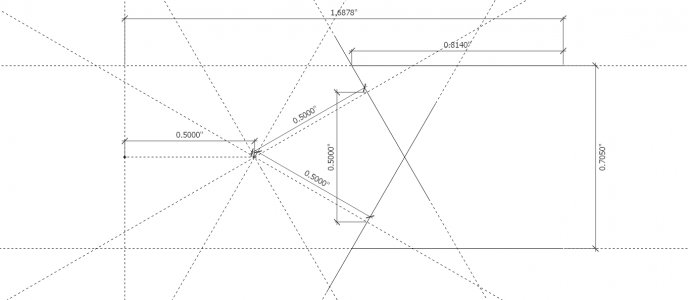-
Welcome back Guest! Did you know you can mentor other members here at H-M? If not, please check out our Relaunch of Hobby Machinist Mentoring Program!
You are using an out of date browser. It may not display this or other websites correctly.
You should upgrade or use an alternative browser.
You should upgrade or use an alternative browser.
Help solve complex math problem... reward if found.
- Thread starter LVLAaron
- Start date
- Joined
- Mar 25, 2013
- Messages
- 4,617
I hope this diagram helps:
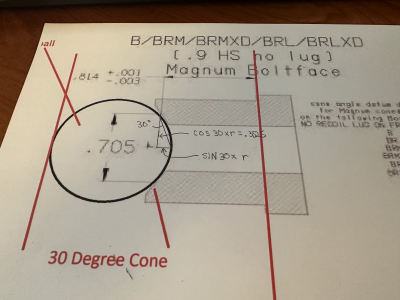
We need to find the short side of that triangle. We were given the other side length.
.705/2=.3525 = cos30 x r (r is the radius of the hypothetical circle). Solving that for r=.4070
The short side then = sin30 x .4070 = .2035
So 1 -.2035 + .814 =1.6105
I think this is correct.

We need to find the short side of that triangle. We were given the other side length.
.705/2=.3525 = cos30 x r (r is the radius of the hypothetical circle). Solving that for r=.4070
The short side then = sin30 x .4070 = .2035
So 1 -.2035 + .814 =1.6105
I think this is correct.
- Joined
- Dec 18, 2019
- Messages
- 6,464
Without doing this in CAD, from the picture just above, it is hard to tell if the ball is touching at the desired places. What is the significance of the 0.705", are these the desired contact points? The picture seems to indicate contact points at a smaller dimension, but that might be an illusion.
- Joined
- Mar 25, 2013
- Messages
- 4,617
You can't know this since the other diameters are not given. It could touch at the .705 dimension ..705 is a basic dimension where the .814 dimension must be in tolerance.
The ball is drawn in by the machinist. There is no assumption or guarantee that it touches the part at the .705 dimension. (it doesn't).
- Joined
- Mar 25, 2013
- Messages
- 4,617
Not fair. You guys are using advanced knowledge of chambers. The .0500 dimension was not given. It was not specified that this was a gauge ball. still good work on solving it! Does this help the OP?
- Joined
- Dec 18, 2019
- Messages
- 6,464
- Joined
- Feb 20, 2019
- Messages
- 335
- Joined
- Oct 31, 2016
- Messages
- 2,649


